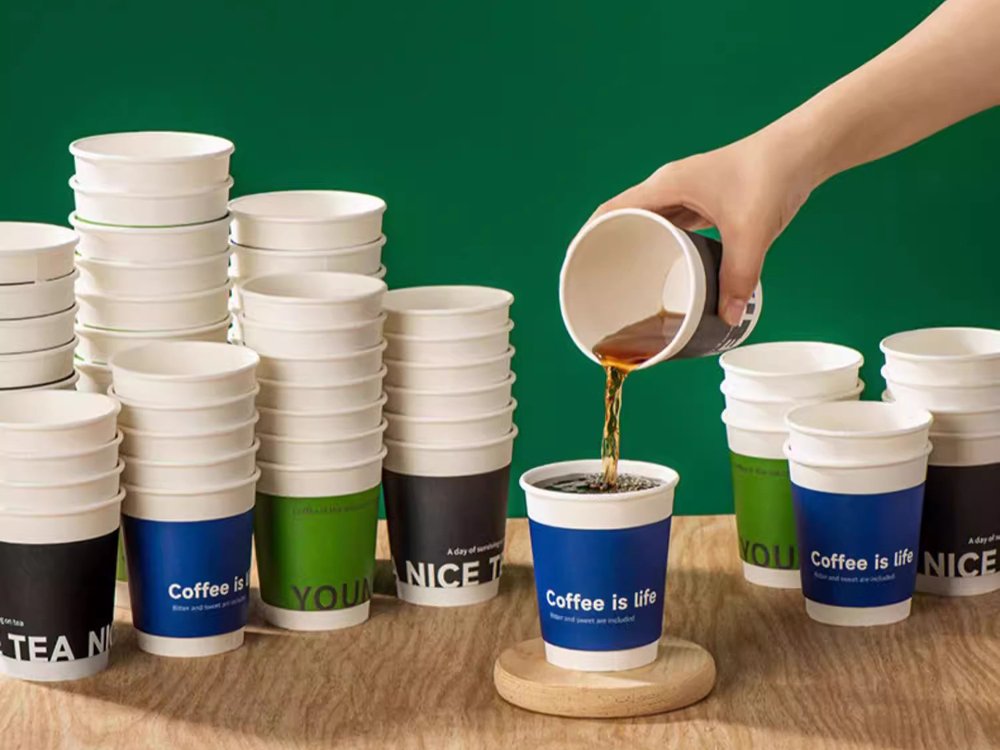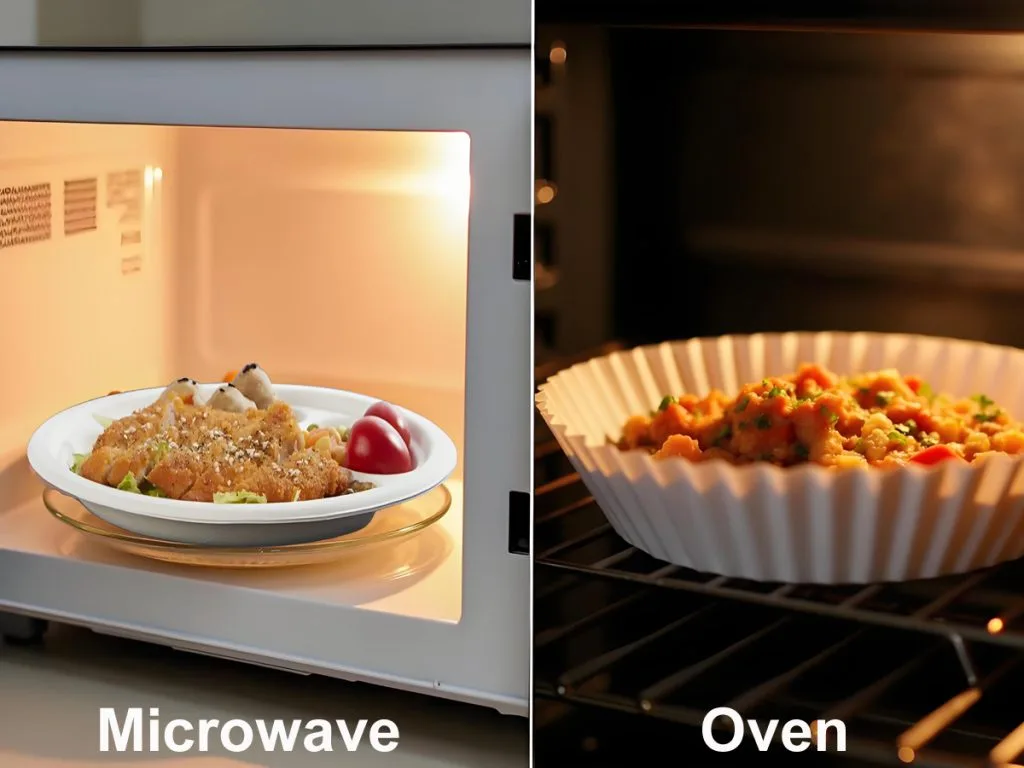
Introduction
Assiettes en papier jetables and dishes are a staple for picnics, parties, and busy households. They’re lightweight, convenient, and easy to dispose of. However, when it comes to heating food, many people wonder: can these plates safely go in the microwave or oven? Misusing disposable plates can pose risks like fires, toxic fumes, or food contamination. This guide will explore the safety of using disposable plates in the microwave and oven, along with practical alternatives.
Are Disposable Paper Plates Microwave Safe?
General Guidelines for Microwave Use
The good news is that many disposable paper plates are microwave-safe. However, this depends on their material and coating. Uncoated, plain paper plates are generally safe for short microwave heating, as they lack harmful chemicals that could leach into food.
Different Types of Paper Plates
Look for labels or markings on the plate packaging. Terms like “microwave-safe” or an icon of a microwave indicate the plate is tested for microwave use. Avoid plates with a waxy or plastic coating, as these can melt or release toxins under heat.
The microwave safety of disposable paper plates depends on the materials used in their production. Here, we’ll explore various types of paper plates and assess their suitability for microwave use.
1. Standard Paper Plates
- Matériau: Typically made from wood pulp (paperboard) and coated with a layer of wax or plastic to make them moisture-resistant.
- Use: Common for everyday use at parties, picnics, or casual dining.
- Impact sur l'environnement: They are non-biodegradable when coated with plastic. If coated with wax, they are more biodegradable but not ideal for composting.
- Compatible avec le four à micro-ondes: These plates are made from basic paper pulp, which is suitable for short microwave uses, typically under short bursts to prevent any soaking through or warping.
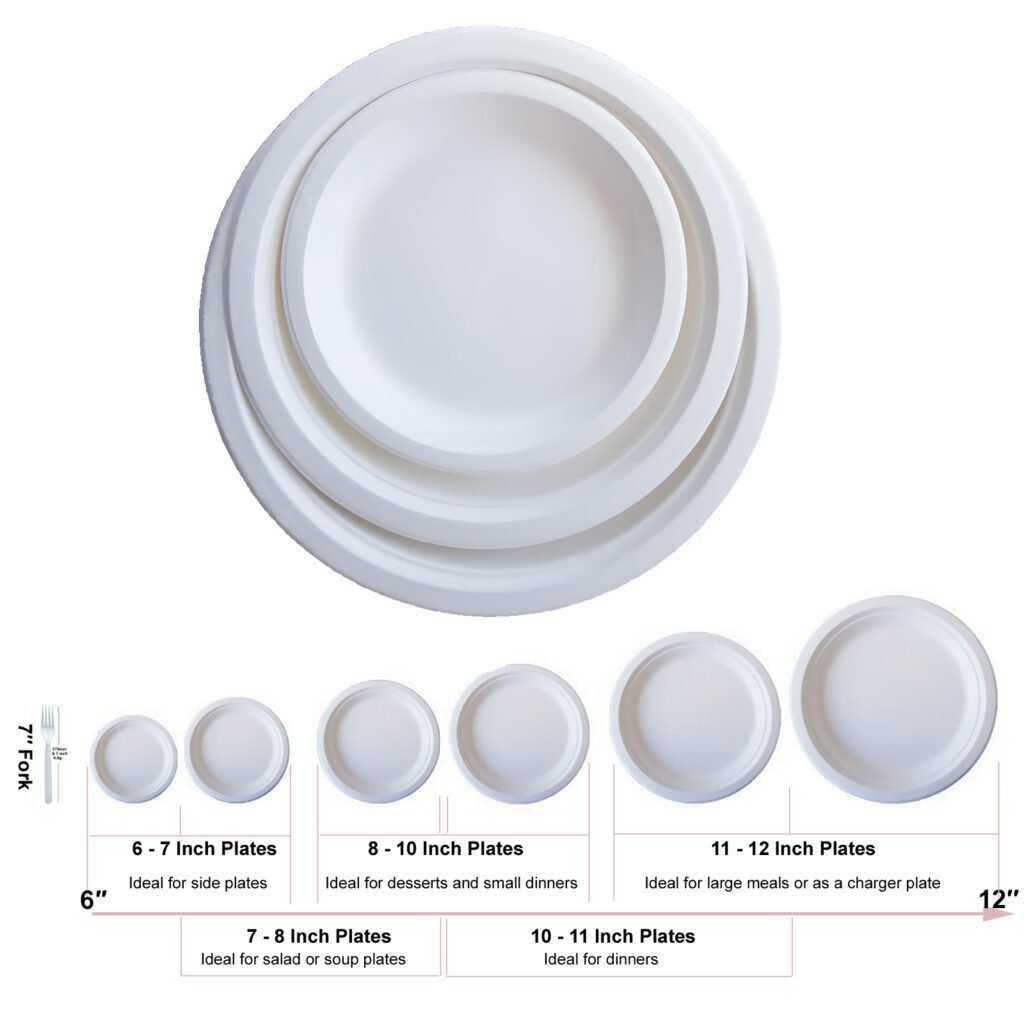
2. Coated Paper Plates
- Matériau: Paper plates that are coated with a thin layer of polyethylene or wax to provide grease and moisture resistance.
- Use: Often used for serving oily foods like pizza, burgers, or fried items.
- Impact sur l'environnement: While these plates offer convenience, the coating makes them difficult to recycle or compost.
- Compatible avec le four à micro-ondes: Coated with a thin layer of plastic or wax to prevent soak-through, these plates are not ideal for microwaving as the coating can melt and potentially release harmful chemicals.

3. Sugarcane (Bagasse) Plates
- Matériau: Derived from the byproduct of sugarcane processing, bagasse is a fibrous material that is strong and durable.
- Use: Popular in eco-friendly foodservice settings. They are strong enough to hold hot, wet, and greasy foods.
- Impact sur l'environnement: Biodegradable, compostable, and recyclable, offering a strong sustainable alternative to traditional paper plates.
- Compatible avec le four à micro-ondes: These eco-friendly plates are microwave-safe and can handle higher temperatures, making them a preferable option for those looking to reduce their environmental impact.
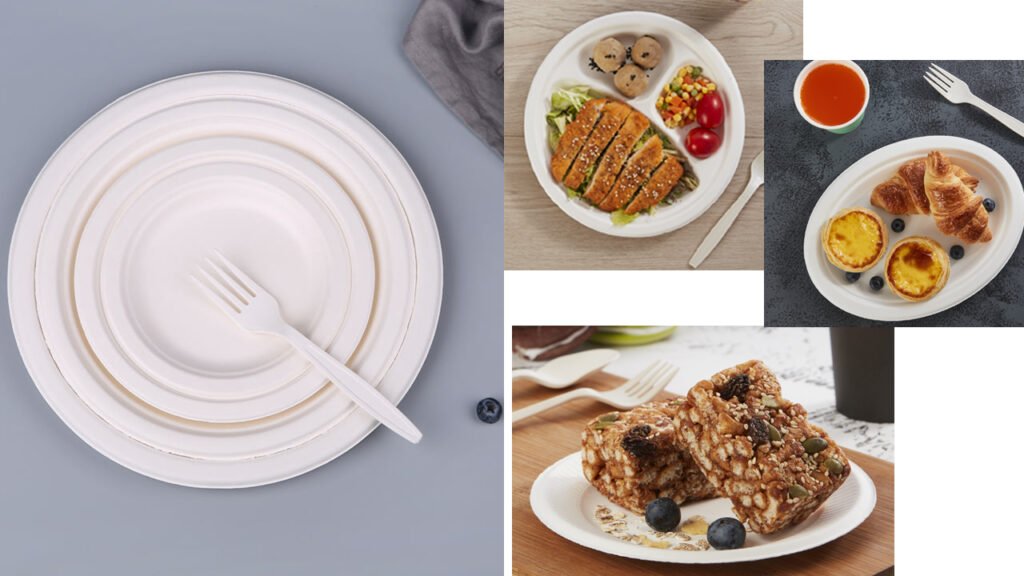
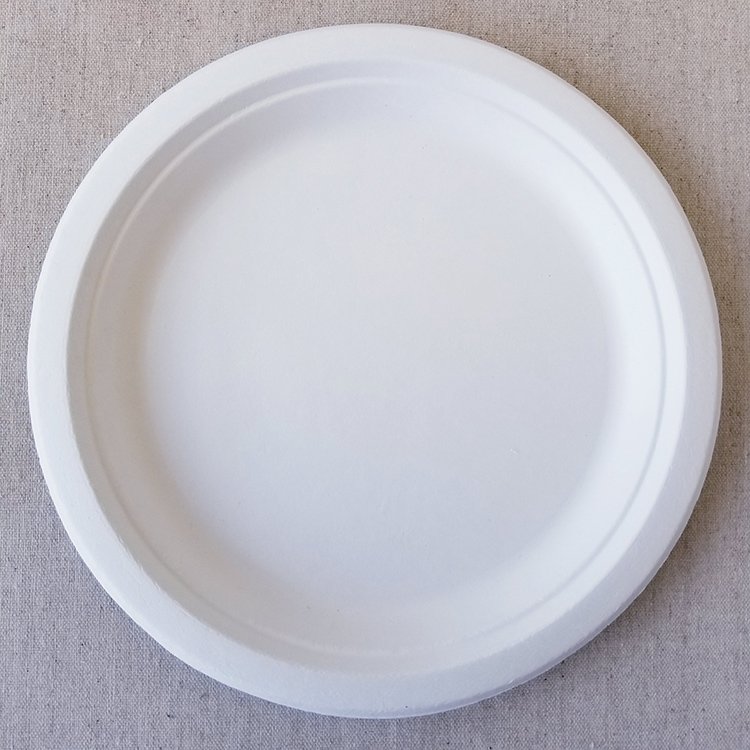
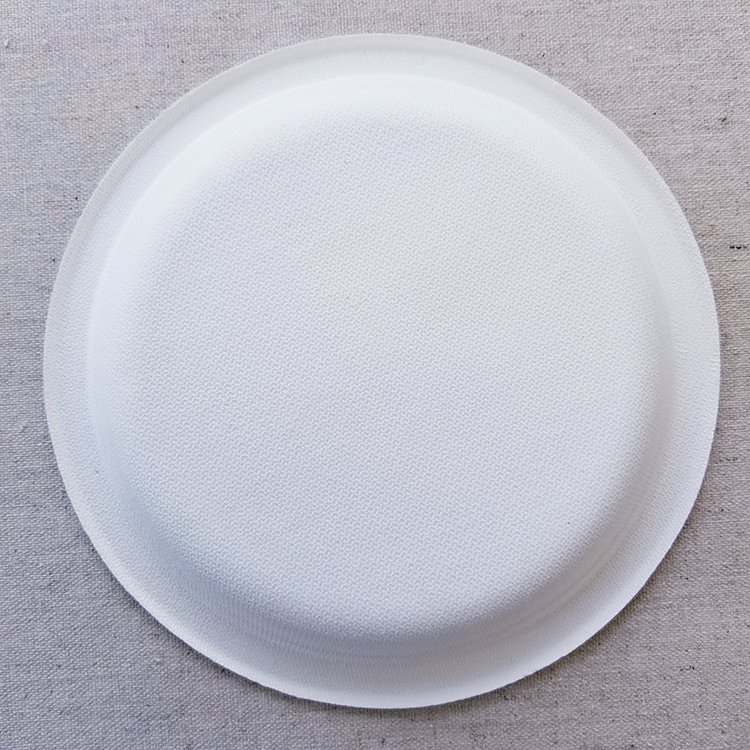
4. Bamboo Paper Plates
- Matériau: Made from bamboo pulp or sometimes bamboo fibers, which are compressed into plates.
- Use: Often used for eco-friendly or upscale catering events, these plates offer a natural look and durability.
- Impact sur l'environnement: 100% biodegradable and compostable, making them an excellent eco-friendly alternative.
- Compatible avec le four à micro-ondes: These plates are durable and microwave-safe, capable of handling heat without releasing any toxins, making them safe for food consumption.
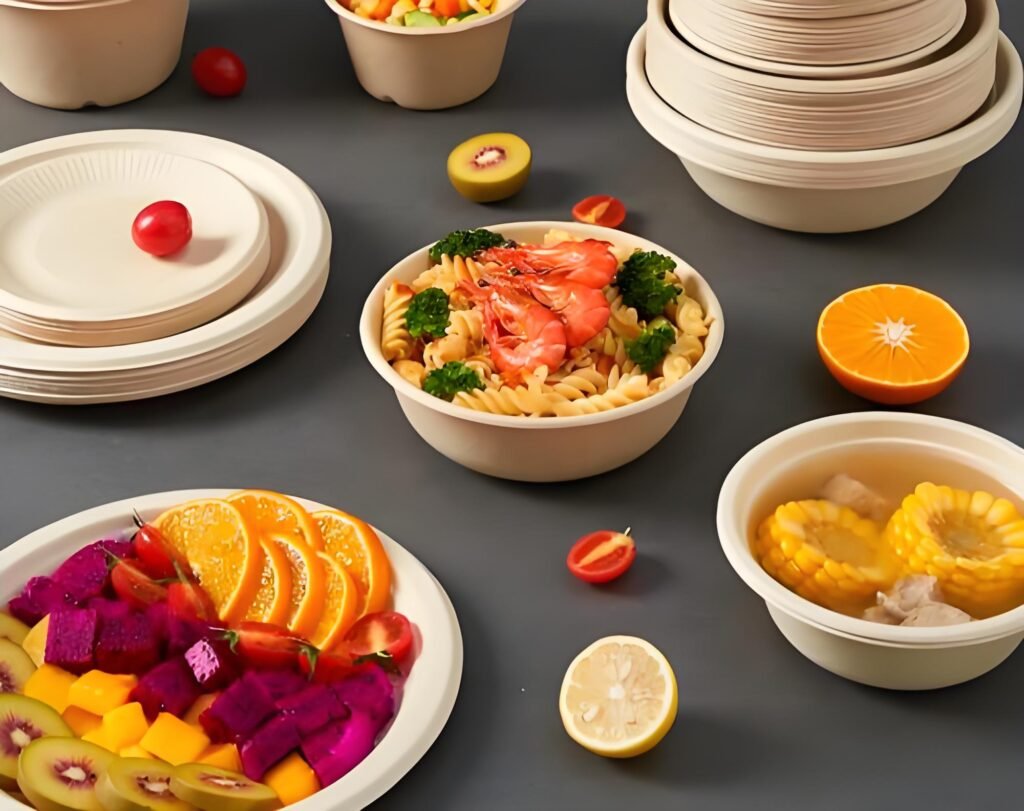
5. Printed Paper Plates
- Matériau: Standard paper plates with printed designs or colors, usually coated for durability.
- Use: Often used for special occasions like birthday parties, weddings, or holidays where aesthetics are important.
- Impact sur l'environnement: Similar to standard coated paper plates, the coatings and inks may impact recyclability.
- Compatible avec le four à micro-ondes: The safety of microwaving printed paper plates depends on the inks used. If the ink is not microwave-safe, it can leach into the food, thus posing health risks.
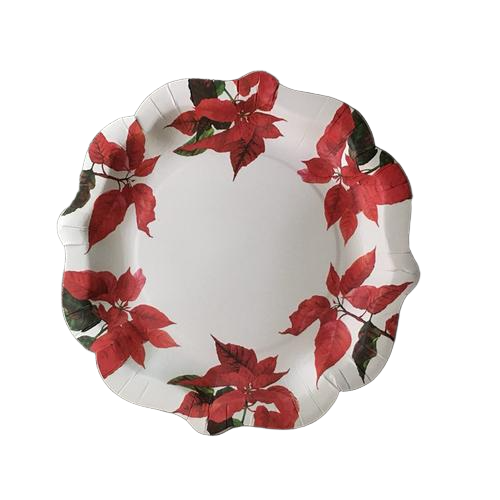
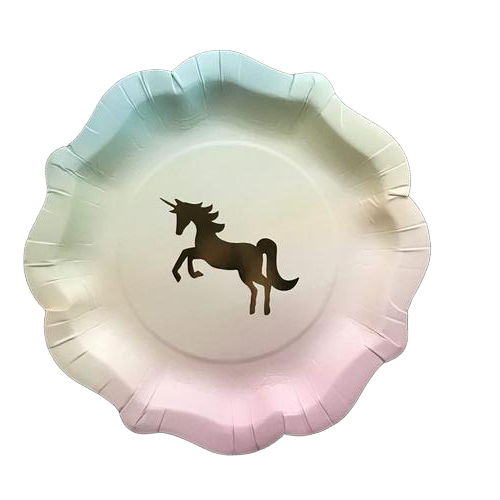
6. Assiettes en papier très résistantes
- Matériau: These plates are made from thicker paperboard, often reinforced for added strength. They may have extra layers of coating or a sturdier structure to handle heavier foods.
- Use: Typically used for serving large meals or foods with more moisture and weight, such as steaks or large salads.
- Impact sur l'environnement: While durable, the added coatings may affect their recyclability.
- Compatible avec le four à micro-ondes: These are thicker and more robust, designed to handle heavier or wetter foods, and can generally be microwaved more safely than their thinner counterparts.
Microwave Safety Table:
| Types of Paper Plates | Material Characteristics | High-Temperature Tolerance | Microwave Safe? | Safe Microwave Duration | Precautions |
|---|---|---|---|---|---|
| Standard Paper Plates | Thin paper pulp | Faible | Oui | Up to 2 minutes | Check for moisture absorption |
| Coated Paper Plates | Paper with plastic/wax coating | Faible | Non | Not recommended | Risk of chemicals leaching into food |
| Bagasse de canne à sucre Plates | Sugarcane fiber | Haut | Oui | Up to 3 minutes | Best eco-friendly microwave option |
| Bamboo Paper Plates | Bamboo fibers | Haut | Oui | Up to 3 minutes | Ensure no synthetic glues or additives are used |
| Printed Paper Plates | Ink-coated paper | Low to Medium | Conditionnel | Varies | Use only if inks are certified microwave safe |
| Assiettes en papier très résistantes | Multi-layered paper | Medium to High | Oui | Up to 3 minutes | Suitable for heavier meals |
Signs That a Paper Plate Is Unsafe for Microwaving
- Warping or softening of the plate during heating
- Smoke or burning smells
- Food stains or moisture seeping through the plate
If you notice any of these signs, stop microwaving immediately!
Can You Use Disposable Paper Plates in the Oven?
Why Paper Plates Are Typically Not Oven-Safe?
Disposable paper plates are not designed to withstand the intense, prolonged heat of an oven. Most paper plates will ignite at temperatures above 451°F (232°C), creating a fire hazard. Even at lower temperatures, they can warp, discolor, or contaminate food.
Different Types of Paper Plates in Oven:
| Types of Paper Plates | Material Characteristics | High-Temperature Tolerance | Oven Safe? | Safe Oven Duration | Precautions |
|---|---|---|---|---|---|
| Standard Paper Plates | Thin paper pulp | Faible | Non | Not recommended | Risk of fire |
| Coated Paper Plates | Paper with plastic/wax coating | Faible | Non | Not recommended | Risk of melting and fume emission |
| Assiettes de canne à sucre | Sugarcane fiber | Haut | Oui | Up to 20 minutes | Only plate type recommended for oven use |
| Bamboo Paper Plates | Bamboo fibers | Medium to High | Non | Not recommended | Risk of burning |
| Printed Paper Plates | Ink-coated paper | Low to Medium | Non | Not recommended | Risk of ink toxicity when heated |
| Assiettes en papier très résistantes | Multi-layered paper | Moyen | Non | Not recommended | Can withstand some heat, but not oven-safe |
It is clear that among the disposable options available, only sugarcane (bagasse) plates are suitable for oven use. Their high heat tolerance makes them a safe choice for baking or reheating food.
Risks of Using Paper Plates in the Oven
- Fire Hazard: Paper is flammable and can catch fire in ovens.
- Structural Weakness: Plates lose their shape and may collapse under food weight.
- Chemical Leaching: Coated plates might release harmful chemicals.
Alternative Oven-Safe Disposable Options
For heating food in the oven, consider:
- Aluminum trays: Durable and heat-resistant.
- Oven-safe glass or ceramic dishes: Reusable and safe for high temperatures.
- Specialty disposable oven-safe trays: These are labeled as oven-friendly and can be discarded after use.
How to Determine If a Disposable Plate Is Heat-Safe
Manufacturer Labels and Certifications
Always check the product packaging for heat safety guidelines. Reputable manufacturers include clear instructions and warnings regarding microwave or oven use.


Heat Testing at Home
If unsure, perform a quick test:
- Place the empty plate in the microwave with a cup of water.
- Heat for 30 seconds.
- If the plate becomes hot while the water remains cool, it’s not safe for microwaving.
Caution: Avoid testing in the oven to prevent fire risks.
Safe Alternatives to Disposable Paper Plates
Microwave-Safe Plastic Plates
Durable and reusable, many plastic plates are specifically designed for microwave use. Look for BPA-free options for added safety. Like Bioleader’s cornstarch plates.
Oven-Safe Disposable or Reusable Dishes
Aluminum pans or ceramic plates are excellent choices for oven use. They are sturdy, heat-resistant, and often recyclable or reusable.
Compostable and Eco-Friendly Options
Modern eco-friendly plates made from bamboo, palm leaves, or sugarcane are both microwave-safe and biodegradable, offering a sustainable alternative.
RecommendSugarcane Bagasse Paper Plates: Best Eco-Friendly Microwave and Oven Option
Sugarcane bagasse paper plates are generally compatible avec les micro-ondes, provided they meet certain quality standards. Bagasse is a natural byproduct of sugarcane processing, making these plates durable, eco-friendly, and heat-resistant. Here’s why they are suitable for microwave use:
- Résistance à la chaleur :
Depending on the manufacturer’s specifications, bagasse plates can withstand temperatures up to 212°F (100°C) and sometimes even higher. This makes them ideal for reheating food in a microwave. - No Coatings or Plastics:
Unlike conventional paper plates, bagasse plates are typically uncoated or lined with plant-based materials, ensuring they don’t release harmful chemicals when heated. - Compostable et biodégradable :
These plates are made from natural fibers, making them safe for microwaving and eco-friendly.
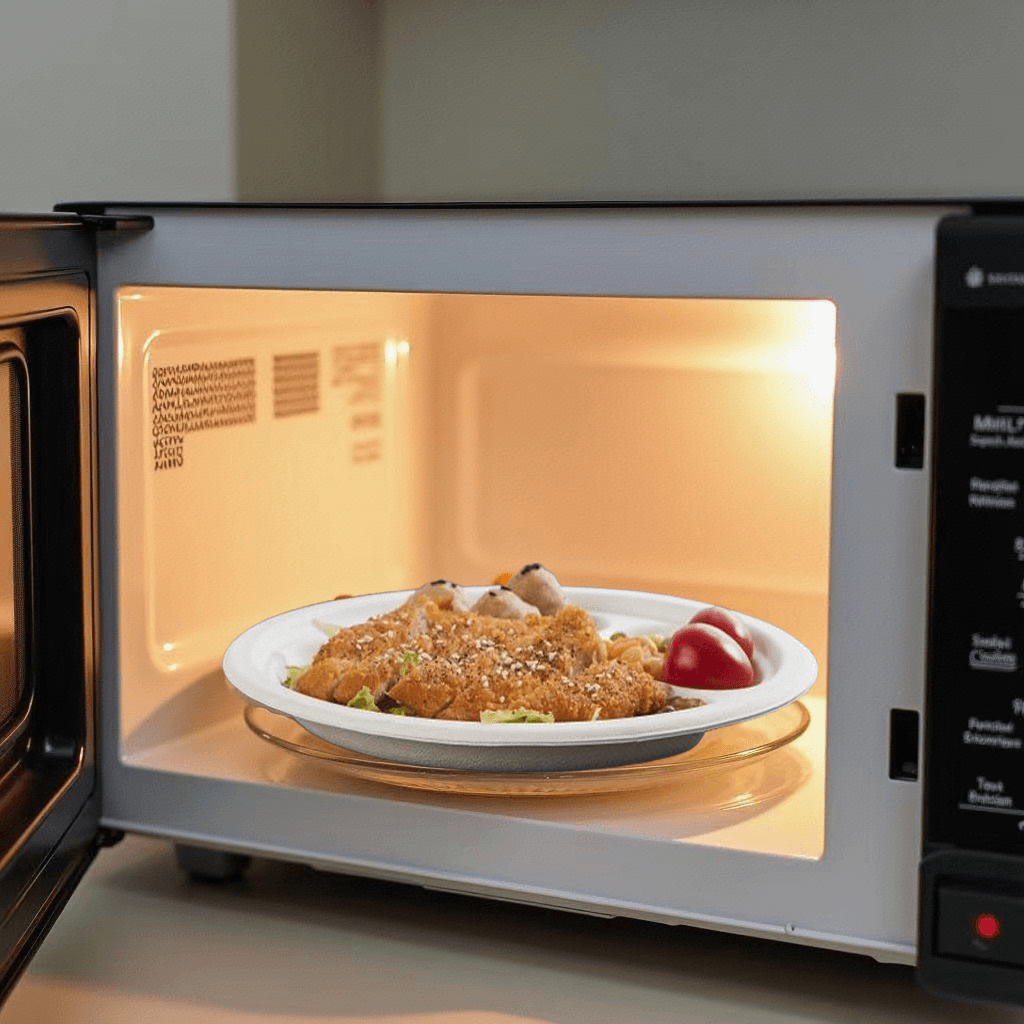
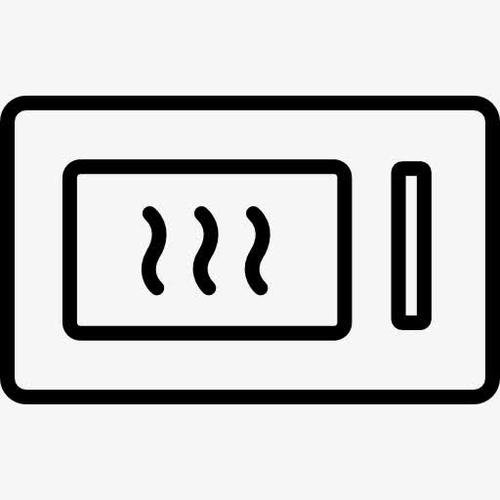
Guidelines for Using Plaques de bagasse in the Microwave & Oven
- Duration:
Limit heating to 2–3 minutes at a time to avoid overheating or structural weakening. - Moisture Handling:
These plates may absorb some moisture from foods like soups or sauces but generally maintain their shape during short reheating sessions. - Choose the Certified Manufacturers:
Always confirm the specific product’s microwave safety on its packaging to ensure compliance with safety standards.
Bioleader is a leading Chinese manufacturer specializing in eco-friendly tableware crafted from sugarcane bagasse. Our range of compostable vaisselle en bagasse de canne à sucre, including plates & dishes, clamshell boxes, food containers, bowls, and trays with lids, offers an environmentally friendly alternative to food packaging.
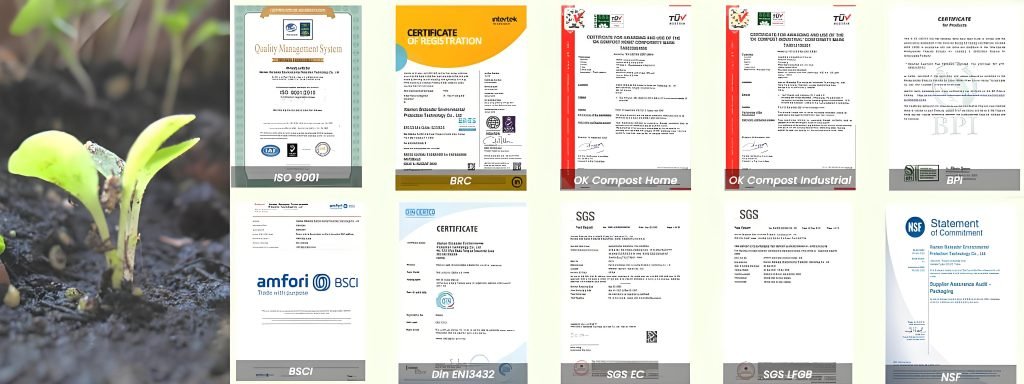
Practical Tips for Heating Food Safely
1. Use Plain Paper Plates for Microwaves: Avoid plates with coatings or decorative designs.
2. Avoid Prolonged Heating: Limit microwave use to 1-2 minutes to prevent overheating.
3. Keep Paper Plates Out of the Oven: Stick to heat-safe materials for baking or broiling.
4. Check Packaging: Always follow manufacturer recommendations for safe use.
FAQs About Heating Disposable Plates and Dishes
Can All Disposable Plates Be Microwaved?
No, only those labeled as microwave-safe. Plates with coatings, metallic elements, or decorative designs are unsuitable for microwaving.
What Happens If You Put a Paper Plate in the Oven?
Most likely, it will burn, catch fire, or lose its shape, potentially ruining your food and creating a hazardous situation.
Are Coated Paper Plates Safe for Heat?
Coated plates may melt or release chemicals when exposed to high heat. Always check the manufacturer’s recommendations before use.
Conclusion
Disposable plates are a convenient solution for serving meals, but they’re not always ideal for heating food. While many paper plates are microwave-safe, they should never be used in an oven. For safe and efficient heating, rely on microwave-safe or oven-safe alternatives. Always check product labels and follow practical tips to avoid accidents.
When choosing disposable paper plates for heating food, it is crucial to consider the plate’s material and construction. While microwaves may accommodate a variety of paper plates, ovens require careful consideration to avoid any fire hazards or health risks. Always check the manufacturer’s guidelines to ensure safety and suitability for your specific needs.
Key Takeaways
- Sécurité des micro-ondes: Check the material and any coatings for microwave safety; avoid any coated or heavily inked plates.
- Oven Safety: Only sugarcane plates are recommended for oven use due to their high-temperature tolerance.
- Environmental Considerations: Opt for bamboo or sugarcane plates as sustainable, microwave-safe options.
By understanding the different types of disposable paper plates and their properties, consumers can make informed decisions that ensure safety and convenience in their kitchen practices.
Liste des sources de référence :
- “Microwave and Oven Safety for Disposable Tableware” – [Food Safety Organization]
- “Eco-Friendly Alternatives to Disposable Plates” – [Sustainability Blog]
- “ARE SUGARCANE BAGASSE PAPER PLATES CAN BE MICROWAVE USE SAFE?” – [Bioleaderpack Blog]
- “Are Paper Plates Microwave Safe?” – John Doe, bioleaderpack.com Link
- “Are Paper Plates Compostable & Biodegradable?” – Jane Smith, bioleaderpack.com Link
- “What to Know About Microwave Safety for Disposable Plates” – Tom Brown, ecofriendlyplates.com Link
- “Paper Plate Safety: Can You Use Them in the Microwave?” – Emily Green, sustainabletable.com Link
- “What Is the Best Paper Plate for the Microwave?” – Lisa White, greenplateguide.com Link

